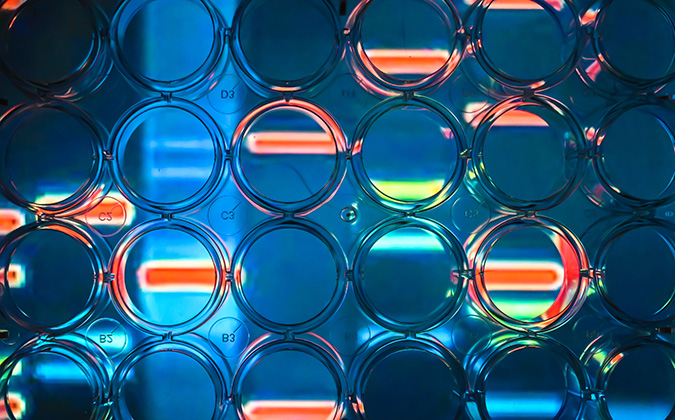
How has the Covid-19 pandemic changed disease management in aquaculture?
The Covid-19 pandemic has left virtually no areas of the economy untouched — and for those working in food production, the pressures can be very distinct.
In aquaculture, business has continued, but as the recent policy briefing from the Food and Agriculture Organization of the United Nations (FAO) about pandemic impacts on the sector detailed, not without challenges. These include changes in demand, lower numbers of staff on site, supply chain disruption and, in some cases, higher stocking levels.
Given the economic and welfare implications of fish health, the need to stay on top of disease management on production sites is a constant. According to Chris Matthews, business unit director for PHARMAQ Analytiq, the level of veterinary involvement in the Scottish Atlantic salmon industry has not been affected — but there have been some changes in working practices.
“Our veterinary unit covers a bigger geographic area than probably any other practice in the UK, and a lot of our work had previously involved air travel. So, the pandemic has meant fewer physical visits to customers that are based in the northern or western isles. In fact, we’ve had to restrict site visits to the most essential work only,” Matthews explained.
“This hasn’t meant less involvement. We’ve just had to adapt to using telemedicine approaches such as triage, performing fish inspections using a proxy on site and gathering information and video material.”
Technology and data use fill gaps
“Fortunately, submission of diagnostic samples to our laboratory has remained high during the pandemic due to pre-existing trends toward both training site staff to collect samples and for producers to have skilled biologists based in their farming regions,” Matthews said.
But where veterinary involvement has been required, technology has helped overcome some difficulties. The practice has devised protocols for using a proxy to dissect fish on camera and even experimented with remote operation of microscopes. Smarter use of data has also brought benefits.
“Reacting to diagnostic data that we’ve collected has become even more important to our work. A good example of that would be with amoebic gill disease, where we’re using the results of polymerase chain reaction (PCR) testing to detect and follow infections on site and decide the best time to strategically treat,” he said.
“Data-led approaches will be here to stay. I think these were processes that were happening anyway. The pandemic has probably catalysed our thinking around how they might be best applied.”
Remote working no longer huge barrier
Matthews and his team increasingly use aggregated diagnostic results. These place farm data in context, over the year, against peers or similar life stages of fish, and have proved especially useful with less direct access to fish, he said.
There are also lessons to be learned from human medicine in terms of how to monitor and analyze health issues over a geographically disparate area. In particular, Matthews and his team have been following the work of the Centre for Rural Health in Inverness, which is developing telemedicine approaches, so that specialists at Raigmore, the hospital in Inverness, can successfully examine human populations in remote communities.
While there have been changes to the way things are done, the fundamentals remain the same, Matthews stressed.
“Ultimately, we’re never going to replace the act of just going and looking at the fish. There’s a lot of information that is best gathered that way, but I think what we have demonstrated is that certain health and welfare examinations can be successfully accomplished by a team working remotely,” he said.
Preventative measures making difference
Benthic monitoring services are another key area of work for Matthews’s practice, but the Scottish government has temporarily relaxed requirements to undertake benthic faunal taxonomic survey of the seabed. Biomass restrictions have also been temporarily varied for some farms, meaning more fish held in net pens.
“One concern had been that higher biomass may have resulted in increased infectious disease challenges, or sea lice,” he continued.
“Actually, within our client base we haven’t seen enhanced disease situations over this period. While there is an element of natural cycling, where biological pressures will vary from year to year, I think in the industry as a whole, preventative health is much more front-of-mind than it has been in the past — and we’re seeing the benefits of that change.”
Pandemic brings epidemiology to forefront
Matthews also believes that how the pandemic has been tackled has provided food for thought for those working to manage disease in aquaculture.
A very practical parallel between veterinary diagnostics and Covid-19 is in the use of PCR and lateral flow tests — where there is a degree of nuance to results, Matthews explained. Professionals need to make calls on the accuracy of these tests to set cut-off points for what constitutes a positive or negative result. This affects the measures taken to keep populations, whether human or fish, healthy.
More broadly, the pandemic has pushed decision-makers and the public to familiarize themselves with concepts related to pathogen transmission, such as diagnostics and biosecurity, which have previously been the domain of experts. This could have long-term effects, Matthews suggested.
“The overarching lesson that governments are learning is that you can’t reason with biology; you can’t legislate your way around biological facts. Viruses in particular, but all kinds of pathogens, are often very difficult to deal with once they are circulating and endemic in populations.
“Vaccines, as we’ve all learned, are an incredible tool in keeping humans or animals healthy, but only ever one part of the solution. Attention to biosecurity, good nutrition, environment, general health are all critical in a preventative approach to disease,” he concluded.






